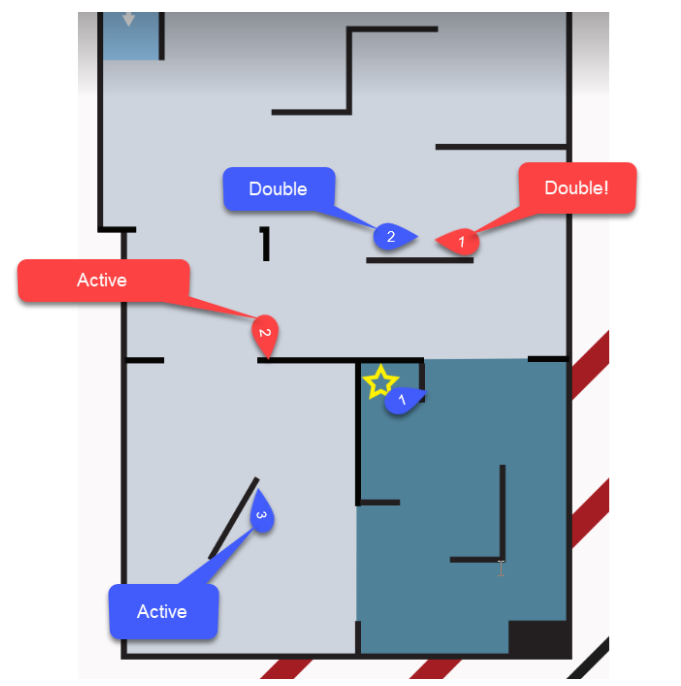Map Chat II
This is the second edition of my Map Chat series, where we analyse base play in hypothetical scenarios. If you haven’t seen the first article yet, you can find it here. Like last time, I have five reviewers giving their opinions on how a specific scenario will play out. This time around we’re looking at a 3 verses 3 at Red Base in Belfort, France. This is the maze where Worlds 2017 was played.
Strategically, a three-player attack is a high-risk, high-reward offensive strategy. In theory they can get a lot of bases very quickly against the standard three-player defence. However, their base will almost certainly be going down at the same time. If their attack gets stalled out, they’ll be in a bad position. We’re not here to talk strategy though. This analysis will be purely tactical for the remainder of the article.
The scenario is below. Feel free to take a second to consider who has the advantage here, as well as how each team should play out the next few spawns, before reading on.

Question 1: Who Has The Advantage Here?
Xeta (Joel from Dunedin, C player, has not played this maze): Red
Puzzles (Margie’s little sister, E player, has not played this maze): Red – they get extra powers from standing near a Cobras sign
Mumin (Top tier Swede from Feydakin, A player, has played this maze): Red
Ibo (Maroon, famous zone caster, A player, has not played this maze): Red
vDark (Cobras, A player, has played this maze): Blue is very likely to get a base here
Summary: Unlike last time we actually have some disagreement over who has the advantage. If I could have asked a follow up question, I would have added “and why” to this question. Based on the answers to the next questions, it looks like the consensus is that Blue will get a base here. Perhaps Red has the advantage despite this?
Question 2: What Should Blue Do?
Xeta: F should take out C, A and B in that order. E should probably wait for F to take out C at any rate.
Summary: Joel has spotted the back route play for F to get a free kill on C. From here he wants F to continue his run past C into the base.
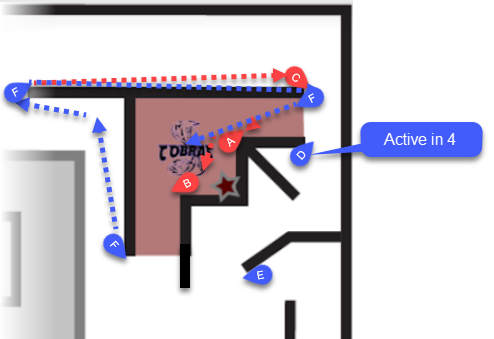
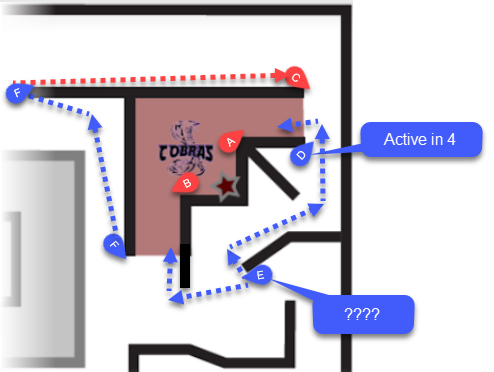
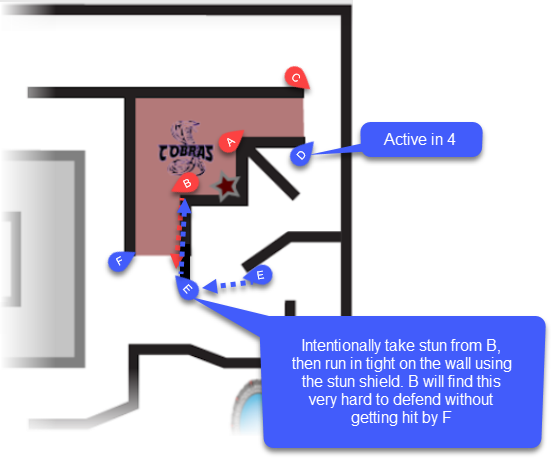


What can we learn from all this?
I think it’s interesting that the newer players basically detailed dealing with the outside player but provided no details on how to get in the base other than “break the door”. While the analysis from the experienced players focuses almost exclusively on how the break would work. With just a single defender outside and the inside players unable to contribute much until the break happens, this is a pretty reasonable approach to take for analysis. The attackers are free to set up whatever break they want.- Here’s a break I prepared earlier: This is one of the most important things you can learn in training and map analysis. Everyone in your team should be aware of what the strongest break setups look like and be constantly working to set these up. This defence will fall almost immediately to a good setup but will last quite a while against a team coming up against it without a plan.
- Don’t be a hero: You might be able to reliably solo break two defenders at your local members’ night, but in a high-level team game there are doors and bases which you will never get into by yourself. If you’re a B player with excellent pack skill but can’t seem to make it on an A team you might be falling into the trap of wasting opportunities with solo attempts instead of waiting to set up a coordinated move with your team.
Question Three: What Should Red Do?
Xeta: C should move close to D. They can cover D and E, and sneak around or through an attack by F.
Summary: I think hiding in that corner with D is the best play from C. Blue probably can’t get a base while D is down and C is up. C should do his best to keep D out of the action without getting hit by F or E. Note that Xeta plays Nexus, where he could conceivably keep D down for a long time. On Helios the next spawn would probably be a double leaving E and F free to attempt a two player break of their choosing.
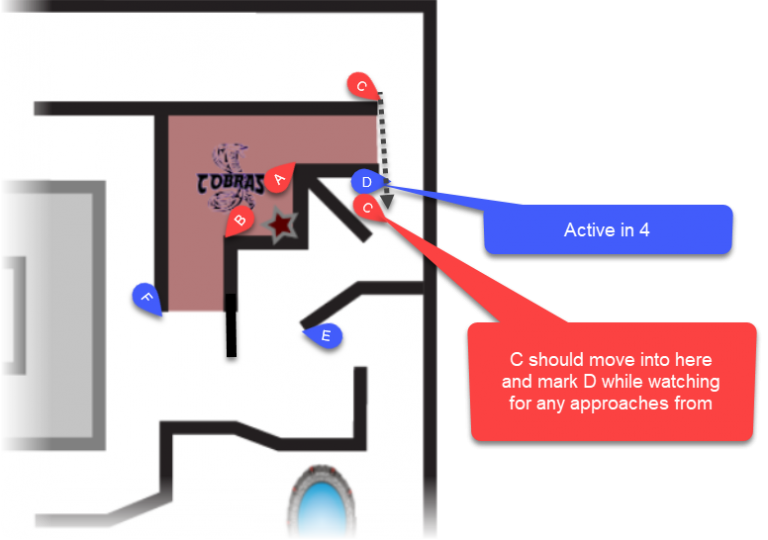
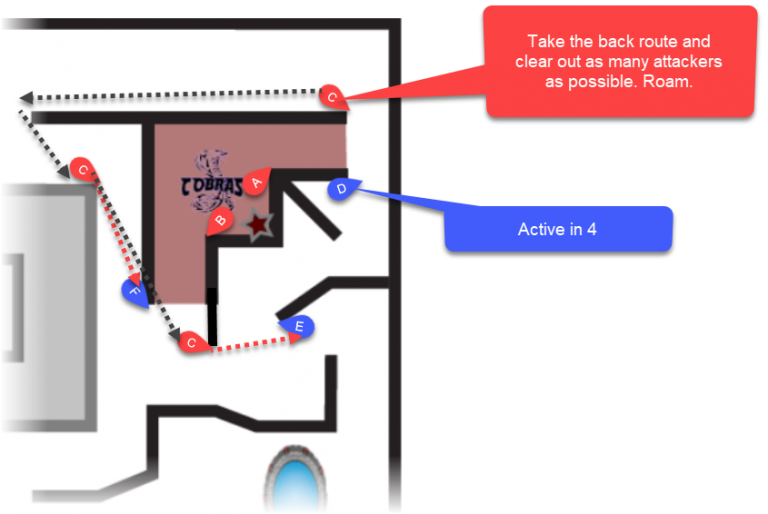

Ibo: Hold the 2 inside and C should just be a nuisance and try not to allow blue to set up the pin.
Summary: Similar to what Puzzles said, keep the inside defenders and have the outside guy roam. I like that Ibo pointed out the specific role of the roamer: stop them from setting up a break.

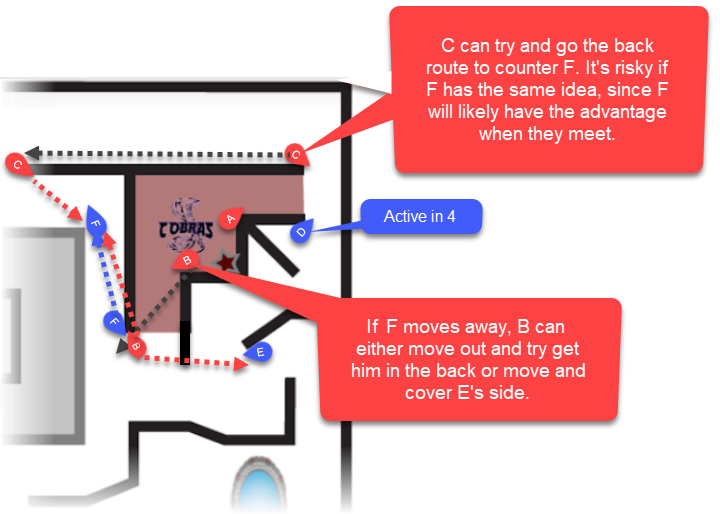

What can we learn from all this?
- Think about what your opponent is doing. We got a lot of different opinions about what the outside defender should be doing, but ultimately he has one job: Prevent the opposition attackers from setting up a take opportunity. In this case it means knowing what the break setups look like and shutting those down before they happen. In another base it might be taking care to stay in deny range. Too many players play this role by just hanging around their assigned door, dueling, and calling. This is a pretty good start, but to really master defence you need to think a little harder.
- Vision is important. In this scenario, there is a lot that the outside defender could be doing to prevent the base going down. But a lot of it relies on a lucky guess about where his opponents are. The players inside the base can’t see much so he will need to do his own scouting. We get two lessons out of this one: First, when planning your defence, make sure you consider what blind spots you are creating for yourself. You can’t assume perfect positioning from someone who doesn’t know where his opponents are. This doesn’t mean a defence with poor vision can’t work, but you will need to work out how to mitigate this disadvantage. Second, scout whenever you can (e.g. while deactive).
Next time
Big thanks to everyone who contributed to this article and to anyone who has taken the time to read through the whole thing. If this sort of analysis is something you would be interested in contributing to, let me know. Next time we’ll be looking at one of the bases at Xtreme in Auckland. This base has recently been updated and I (along with most of the contributors) have never played in it. It should be interesting to see what comes up.
